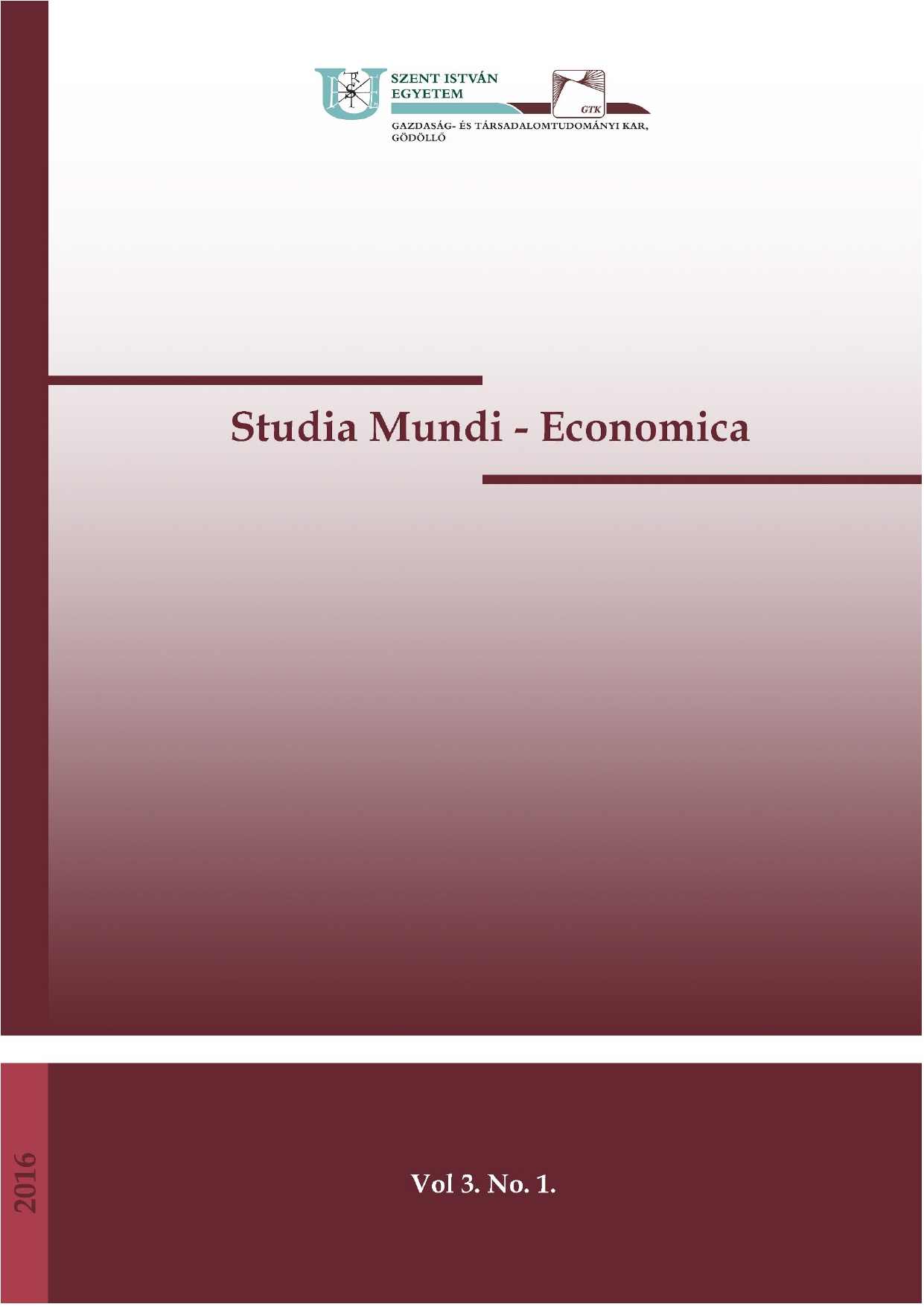Regional correlations in the development of rural economy
DOI:
https://doi.org/10.18531/Studia.Mundi.2016.03.01.52-61Keywords:
regionális gazdaság, vidékgazdaság, telephelyválasztásAbstract
In the 90s, the production structure in the rural economy underwent significant restructuring due to the change of regime, the changes in the land ownership, in the market economy as well as the transformed external economic and market relations. Based on such processes, the disparities between developed and areas lagging behind further increased. Obviously, the rural and spatial development policies, influencing such changes, are also under changes. In order to understand such restructurings and to achieve development, we must understand several spatial correlations. Overall, spatial differences and specializations both determine the major correlations of location selection in the Hungarian rural areas. All these factors together reflect the real spatial structure of today’s Hungarian rural areas, including the corporate and national economic interests, the potential improvement in efficiency considering small and large size units, as well as the increase in the quality of rural life.
References
BARTA GYÖRGYI–BERNEK ÁGNES–NAGY GÁBOR (2003): A külföldi működőtőke-befektetések jelenlegi tendenciái és területi elmozdulásának esélyei Magyarországon. – Tér és Társadalom, 2003/4. pp. 173–190.
BOGÁRDI TÜNDE-NAGYNÉ MOLNÁR MELINDA (2014): The barriers to economic development through the example of a Hungarian internal periphery. VESTNIK APK STAVROPOLYA/AGRICULTURAL BULLETIN OF STAVROPOL REGION 1:(1) pp. 52-55.
CHAPMAN, K.-WALKER, D. F. (1991): Industrial Location: Principles and Policies. Blackwell, Oxford.
DICKEN, P.-LLOYD, P. E. (1990): Location in Space. Theoretical Perspectives in Economic Geography, Harper Colins, London.
ENYEDI GYÖRGY (2004): Processes of Regional Development in Hungary. In: Enyedi György - Tózsa István (eds.): The Region. Akadémiai, Budapest. 21-35
ENYEDI GYÖRGY (2000): Globalizáció és a magyar területi fejlődés. Tér és Társadalom, 2000.
FRIEDMANN, J.-FOREST, Y. (1988): The politics of place: toward a political of territorial planning. Boston.
GODA PÁL-TÓTH TAMÁS (2013): Pókháló- entrópia, mint új rendszervizsgálati megközelítés a területi elemzésekben TERÜLETI STATISZTIKA 53:(2) pp. 169-189.
HEALY, M. J.-ILBERY, B. W. (1990): Location and change. Perspectives an Economic Geography. Oxford University Press, Oxford.
KARHUSZ PÉTER (2003): A telephelyválasztás elméleti keretrendszere.
LENGYEL IMRE (2000): A regionális versenyképességről. Közgazdasági Szemle, 12. sz. pp. 962-987.
LENGYEL IMRE (1994): A telephelyválasztás. In Rechnitzer J. (szerk): Fejezetek a regionális gazdaságtan tanulmányozásához. MTA RKK, Győr-Pécs. Pp.35-68.
LENGYEL I.-RECHNITZER J. (2004): Regionális gazdaságtan. Dialóg Campus Kiadó, Budapest-Pécs.
MOLNÁR LÁSZLÓ (2004): A befektetések ágazati és regionális szerkezete és hatása az ágazatok és régiók versenyképességére. GKI Gazdaságkutató Rt.
NAGY HENRIETTA (2003): Problems and questions in the Hungarian regional policy. MendelNet 2002/3, Brno, ISBN 80-7302-045-9, ISBN 80-7302-046-7 p. 213-219
NAGYNÉ MOLNÁR MELINDA (2013): Factors of success in case of local society. DETUROPE: CENTRAL EUROPEAN JOURNAL OF TOURISM AND REGIONAL DEVELOPMENT 5:(3) pp. 63-70.
NEMES NAGY JÓZSEF (2003): A fekvés és az iskolázottság hatása a területi egyenlőtlenségekre Magyarországon. Pp. 133–144. Munkaerő-piaci tükör (szerk.: Fazekas K.): MTA Közgazdaságtudományi Kutatóközpont. – Budapest, Pp. 144–159.
RECHNITZER JÁNOS (1998): Területi stratégiák. Dialóg Campus Kiadó, BudapestPécs.
RITTER KRISZTIÁN (2008): Agrár-munkanélküliség és a területi egyenlőtlenségek. BULLETIN OF THE UNIVERSITY OF AGRICULTURAL SCIENCES (GÖDÖLLŐ) 2: pp. 639-652.
Downloads
Published
Issue
Section
License
Copyright (c) 2016 Káposzta József

This work is licensed under a Creative Commons Attribution-NonCommercial-NoDerivatives 4.0 International License.
A folyóirat Open Access (Gold). Cikkeire a Creative Commons 4.0 standard licenc alábbi típusa vonatkozik: CC-BY-NC-ND-4.0. Ennek értelmében a mű szabadon másolható, terjeszthető, bemutatható és előadható, azonban nem használható fel kereskedelmi célokra (NC), továbbá nem módosítható és nem készíthető belőle átdolgozás, származékos mű (ND). A licenc alapján a szerző vagy a jogosult által meghatározott módon fel kell tüntetni a szerző nevét és a szerzői mű címét (BY).






